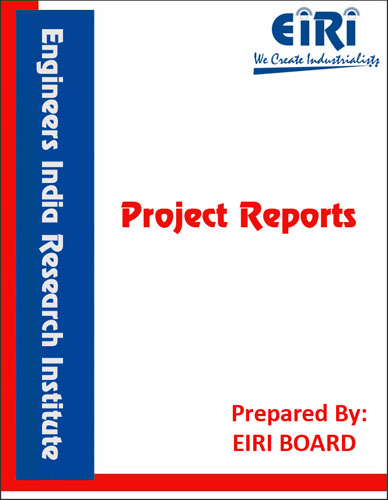The project report includes Present Market Position and Expected Future Demand, Market Size, Statistics, Trends, SWOT Analysis and Forecasts. Report provides a comprehensive analysis from industry covering detailed reporting and evaluates the position of the industry by providing insights to the SWOT analysis of the industry.
PVC (unplasticized polyvinylchloride) pipes and fittings exhibit excellent resistance to aggressive environments both naturally occurring and as a result of industrial activity. They are resistant to almost all types of corrosion, either chemical or electrochemical in nature. Since PVC is a non-conductor, galvanic and electro chemical effects do not occur in PVC pipes.
PVC Pipes and fittings a often used in the following circumstances:
• For drinking water pipe distribution systems, both main and supply lines
• Sewer and discharge pipe systems
Due to its non-metallic nature, the material used is totally resistant to all forms of metallic corrosion.
Aggressive water resulting from high sulphate soils and low hardness water will not attack PVC pipes.
Our pipes are therefore resistant to a wide range of industrial waters and chemicals and offer an advantage in long-term systems life and manufacture costs.
For more information on the resistance of PVC for specific chemical(s), do not hesitate to let Interplast know. We inform you of the suitable pipe solution necessary.
Being made of a tasteless and odorless material, PVC pipes remain neutral to all transported fluids.
PVC is completely inert and is widely used for transporting liquids made for human consumption.
Because of their mirror-smooth inside surface, PVC pipes have minimum flow head loss. There is also no buildup of inside deposits, a particular advantage in the construction of sewerage systems.
The physical properties of PVC pipes are not affected by neither direct sunshine, nor wind or rain.
However, to avoid surface browning due to long exposure to direct sunlight, it is recommended that the pipes are kept protected from direct sunlight.
Rigid PVC is not conductive to combustion. In the event of a fire, flames are unable to travel on PVC pipes. They therefore offer added safety when used for electrical installations, both domestic and industrial.
PVC pipes are relatively light. Their specific weight 1.43 is one- fifth that of steel pipes. This cuts down transportation costs and facilitates installation when in difficult and remote places. Installation is quick and easy with a complete line of fittings either with the solvent glue weld sockets or the rubber seal socket joints. In either case, a leak-proof joint is assured. Subsequent maintenance work is also carried out with a minimum of complication and cost.
PVC pipe which is made from polymerized vinyl chloride, a synthetic resin, which when plasticized or softened with other chemicals has some rubber-like properties. Derived from acetylene and anhydrous hydrochloric acid. PVC pipe has nominal sizes that are to be used with PVC socket fittings (schedule 40) and PVC socket or threaded fittings (schedule 80).
PVC Pipe and Fittings have got tremendous demand in India as well as in abroad.
To manufacture this, all the machinery and raw materials are available indigenously.
A polyvinyl chloride (PVC) pipe is made from a plastic and vinyl combination material. The pipes are durable, hard to damage, and long lasting. A PVC pipe does not rust, rot, or wear over time. For that reason, PVC piping is most commonly used in water systems, underground wiring, and sewer lines.
INTRODUCTION
PROPERTIES OF PVC PIPES & FITTINGS
ADVANTAGES & LIMITATIONS
BUREAU OF INDIAN STANDARDS SPECIFICATIONS PLASTIC PIPES & FITTINGS
PLUMBING PIPES
APPLICATIONS OF PVC PIPES & FITTINGS
ADVANTAGES OF USING PVC PIPES
MARKET SURVEY
PRODUCTION OF PVC AND CPVC PIPES FROM 2007 TO 2016
PRESENT CONSUMPTION PATTERN OF P.V.C. RIGID PIPES
TREND IN INCREASE IN DEMAND
OVERVIEW OF PVC IN INDIA
MANUFACTURERS/EXPORTERS
PVC PIPE MANUFACTURERS/EXPORTERS RAW MATERIAL SECTION
FORMULATION FOR PVC RIGID PIPES
USES & APPLICABILITY OF PVC COMPOUNDS
PROCESS OF MANUFACTURE OF RIGID PIPES
PLASTICIZER OF PVC
FILLERS OF PVC
STABILIZERS
PROCESS FLOW SHEET FOR THE MANUFACTURE OF PVC PIPES
PROCESS FLOW SHEET FOR THE MANUFACTURE OF PVC FITTINGS
PLANT LAYOUT
THE NEW GENERATION OF PVC-O PIPES
UNBEATABLE HYDRAULIC PROPERTIES
FITTINGS
PRODUCTION OF PVC IRRIGATION PIPE
SUPPLIERS OF PLANT AND MACHINERY
SUPPLIERS OF RAW MATERIALS
APPENDIX – A:
1. COST OF PLANT ECONOMICS
2. LAND & BUILDING
3. PLANT AND MACHINERY
4. FIXED CAPITAL INVESTMENT
5. RAW MATERIAL
6. SALARY AND WAGES
7. UTILITIES AND OVERHEADS
8. TOTAL WORKING CAPITAL
9. COST OF PRODUCTION
10. PROFITABILITY ANALYSIS
11. BREAK EVEN POINT
12. RESOURCES OF FINANCE
13. INTEREST CHART
14. DEPRECIATION CHART
15. CASH FLOW STATEMENT
16. PROJECTED BALANCE SHEET



